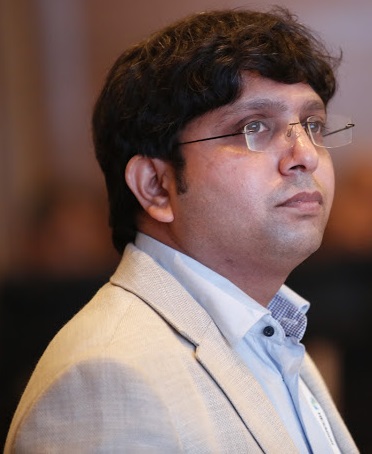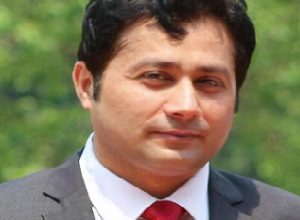Accelerating eVTOL development to make Flying Cars dream, a Reality!

Flying cars have always been a common feature of the imagined future. Whether it was in the popular cartoon series ‘Jetsons’, where they were seen hovering in space in Orbit City, or the famous sci-fi movie, ‘Back to the Future,’ where DeLorean had the ability for a normal flight in addition to time-travel. Coming to the present; the notion of a flying car is no longer a far-fetched dream but is in the process of becoming a reality. A new class of aircraft – Electric Vertical Take-Off and Landing (eVTOL) – promises to usher in a transformational change in Urban Air Mobility (UAM) and regional transportation. eVTOL has the potential to drive greater connectivity at lower emissions, ensuring all along, that people and cargo reach their destinations quickly, comfortably and cost-effectively.
The Age of eVTOL Beckons
This is possibly the best time to be associated with the UAM and eVTOL sectors. As per KMPG International’s 2019 report – Aviation 2030: Disruption and its implications for the aviation sector, urban air mobility (VTOL and eVTOL), electric, hybrid and hydrogen aircraft, and next-gen supersonic, are said to be megatrends that are moving from nascency to a sunrise phase. More than 200 companies across the globe are said to be working on eVTOL and an interest has piqued not just in the aerospace and defence industries, but also in the automotive, taxi & ride-sharing services and logistics sectors. Several big companies from the automotive space have recently invested heavily in the companies that are pioneering the eVTOL space and are providing their insights drawn from their experience of building powertrains, control mechanisms and so on for e-mobility to accelerate the design process. Companies like Hyundai, Toyota, Stellantis and Suzuki, to name a few, have recently ventured into this space reinforcing the importance of this breakthrough to the overall business of transporting people and cargo.
Tacking Unique Challenges in eVTOL Design
The brightest minds from the aerospace and automotive industries have been inducted into the eVTOL sector to tackle its distinctive engineering challenges. When it comes to these challenges, there are not very different from those faced by the commercial aerospace industry. However, UAM companies often have smaller teams who have the responsibility to solve the same number of problems and complexities as their larger and more established counterparts. While the commercial aerospace industry has gold standards that have been set with years of research and development, the engineers in the eVTOL space are still developing standards in design, materials, manufacturing, safety and emissions that will be benchmarked for the future.
eVTOL aircraft are unique in the way that they are largely built with light materials and advanced manufacturing processes while maintaining aerospace industry performance requirements. Hence, the design, testing and analysis of each component and tackling the challenges that come therewith is of paramount importance to its success. Given that these aircrafts will be used for urban mobility, engineers must improve and optimise the structural design by developing advanced materials to design their composite wings and fuselage. They must optimize geometry, predict structural loads, and make the design lightweight, without losing structural integrity or performance of the product. They need to make key design decisions and accurately predict the aerodynamics, aeroelasticity, flutter and stability of the rotorcraft to ensure a robust structural design. As an eVTOL aircraft will fly through populated areas and many companies are targeting them as a personal vehicle, noise prediction both on the inside and outside of the vehicle will take precedence. Solutions will be necessary to reduce noise inside the aircraft. Noise pollution and reducing the aircraft’s acoustic signature will be key considerations outside. Engineers must develop world-leading electric aircraft propulsion systems that are backed by batteries that can provide the necessary power as well as recharge rapidly during high-demand periods. They must tackle the problem of control mechanisms, reduce pilot workload and pave the path towards autonomous flying. Finally, they also need to ensure the durability, and reliability of every component in this complex system. While solving each of these requirements and more, engineers are tasked with ensuring the feasibility of large-scale manufacturing, cost-effectiveness, and the highest safety standards to ensure they receive the required aviation certifications.
Every company in the sector is gunning to achieve this feat of engineering in the shortest time possible and make the dream of elevated mobility a reality. Simulation tools can not only ease the process of designing and testing eVTOL aircraft, but they can also help ensuring safety and compliance for certification.
Regulation and Certification are Key
Aviation authorities around the world have already taken note of the developments in the eVTOL space and are working closely with subject matter experts & eVTOL developers to ensure aircrafts are safe for every person that travels in them. Federal Aviation Administration (FAA) has already set some ground rules for an eVTOL aircraft and is making special considerations for parts that don’t quite meet the existing standards of certification such as electric aircraft population systems. Meanwhile, the European Union Aviation Safety Agency (EASA) is also working on special condition VTOL means-of-compliance (MOC) to certify eVTOL aircraft. In India QCI along with DGCA have formed UAS/Drone rules; not specific to UAMs as of now.
While engineering simulation software may seem daunting for startups that have taken to the eVTOL space, it will be helpful for them to start with questions they have to answer. These questions may relate to durability, strength, safety, performance, test-worthiness, crash-worthiness, integrity and so on. They must then identify areas where the support of a ‘digital twin’ will help answer these questions. This may be in areas such as aerodynamic design; external loads, flutter and dynamic stability; internal loads, structural design and light-weighting; acoustic and noise prediction; propulsions and emissions; control and mechanisms and manufacturing and costing. Software providers will then be able to guide them with the right tools for the right areas.
The realisation of the dream of elevated mobility and the day when flying cars will adorn the city skies is not too far away. While engineers are working at the very cutting-edge of innovation and design, software simulation solutions can act as a catalyst to leapfrog ideas into reality. These solutions can accelerate aerospace electrification by helping engineers discover a more integrated, sustainable approach to design, development, certification and production. The future of air mobility is exciting, it is electric, it is safe, and most importantly sustainable.
Author:

Shripathi V
Sr Technical Manager, Aerospace, Indo-Pacific
Hexagon
Shripathi leads the Aerospace Technical Division at Hexagon Manufacturing Intelligence(HMI), Indo-Pacific region. He started his career at Indian Institute of Science and is currently working with HMI on Aeroelasticity, Structural Dynamics, Optimisation, Thermal, Composites and various integrated simulation solutions over a decade. Shripathi has to his credit, implementation of various advanced simulation solutions at Global OEMs. He has played a key role in providing integrated simulations to several indigenous Indian Aerospace & Defense projects.
Published in Telematics Wire


